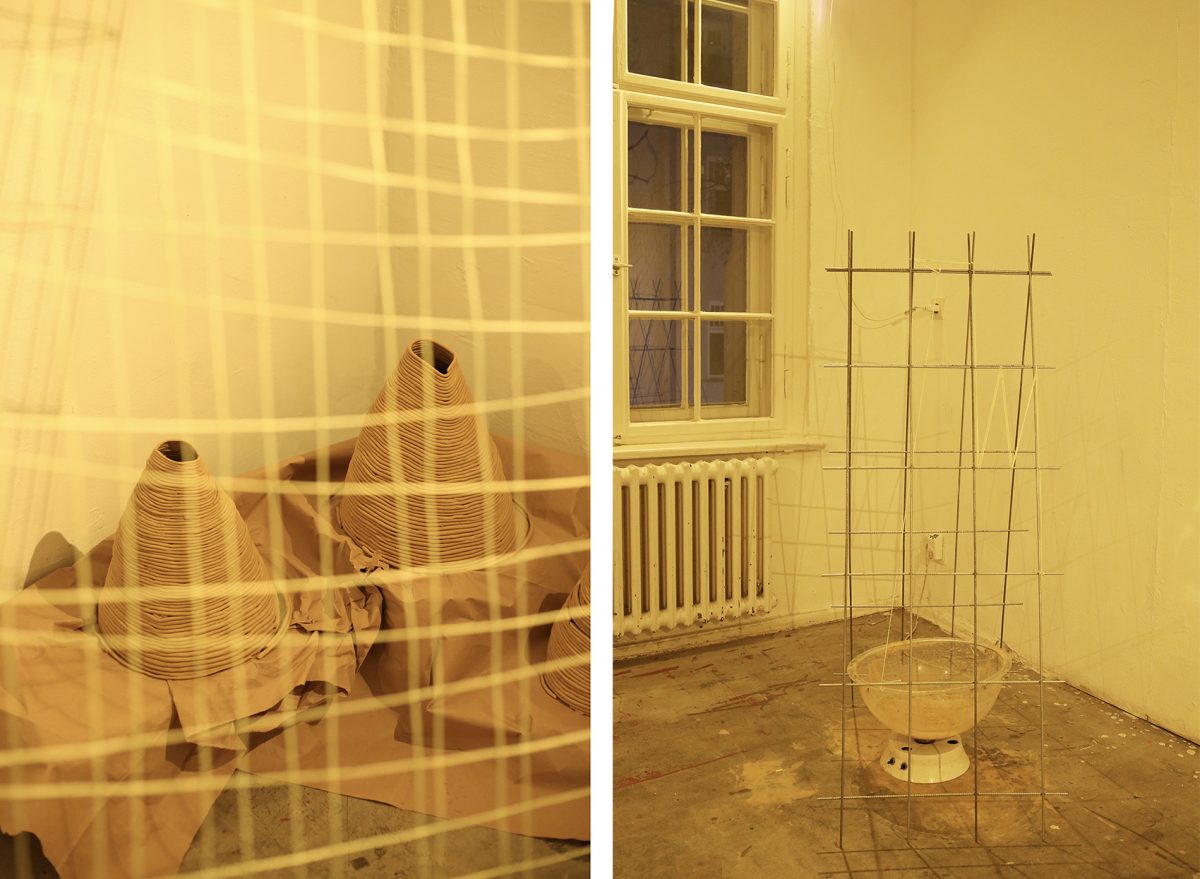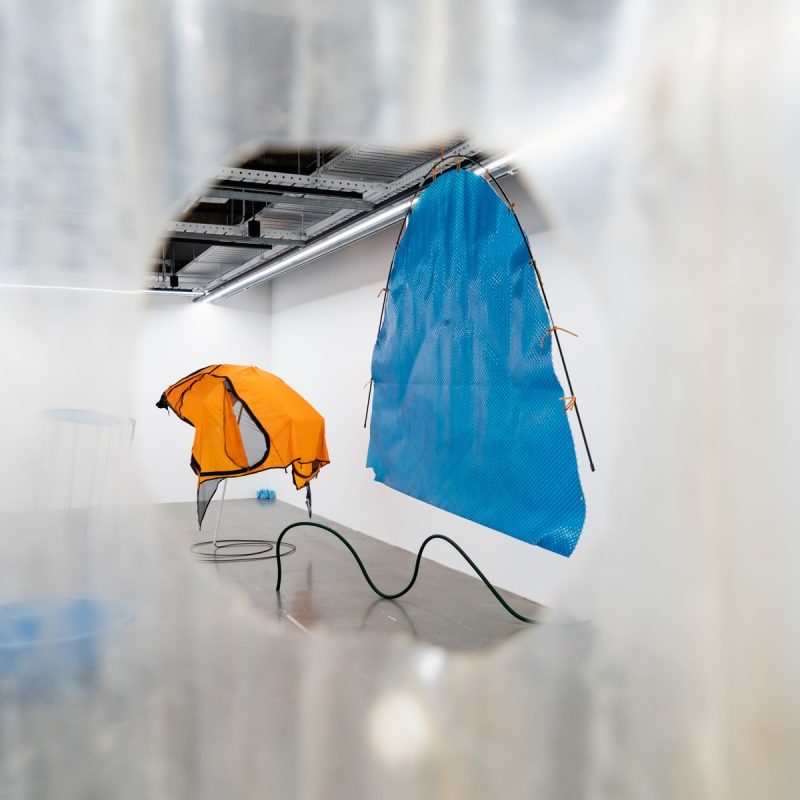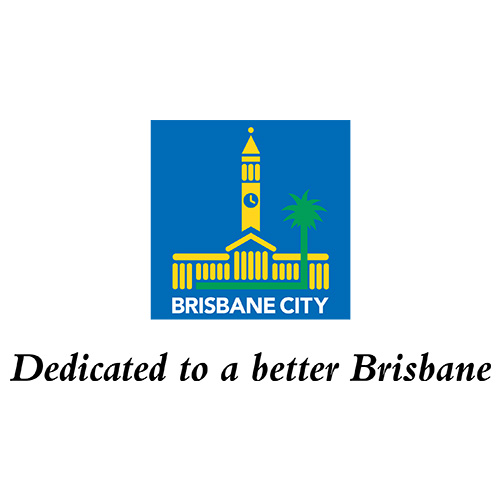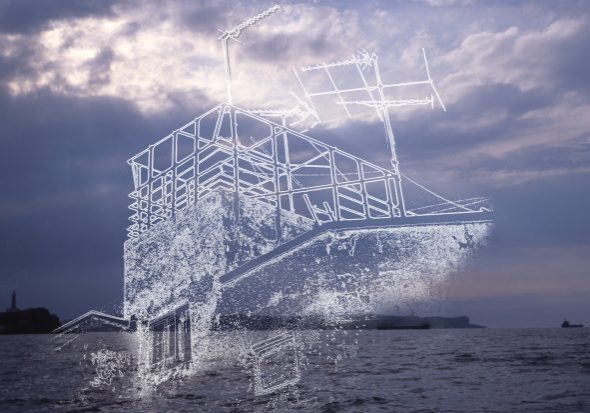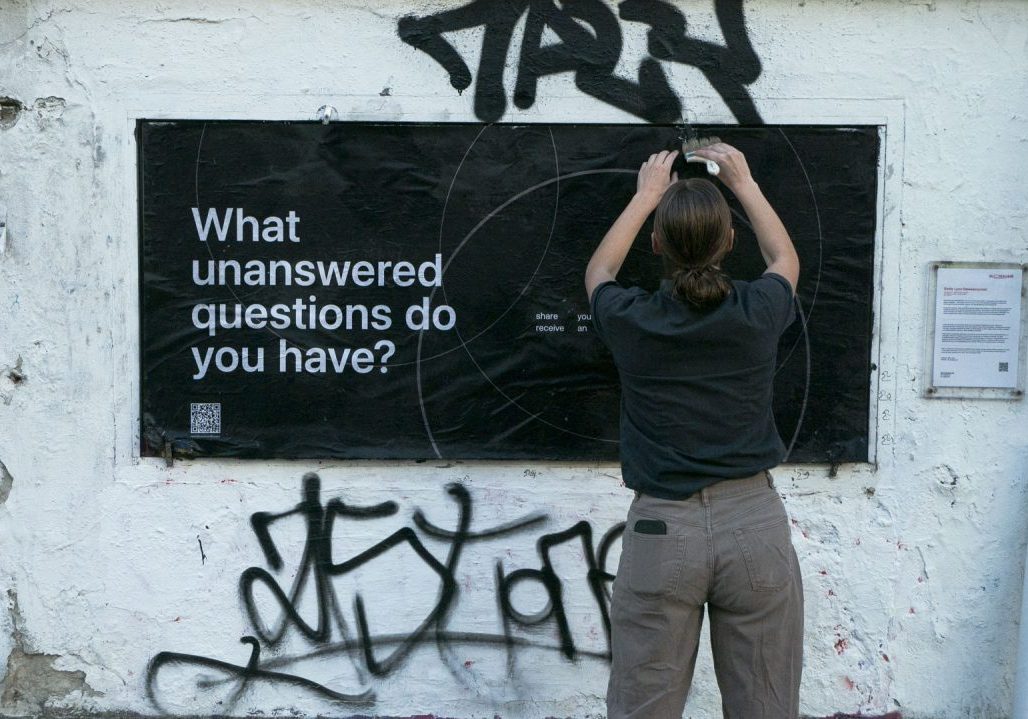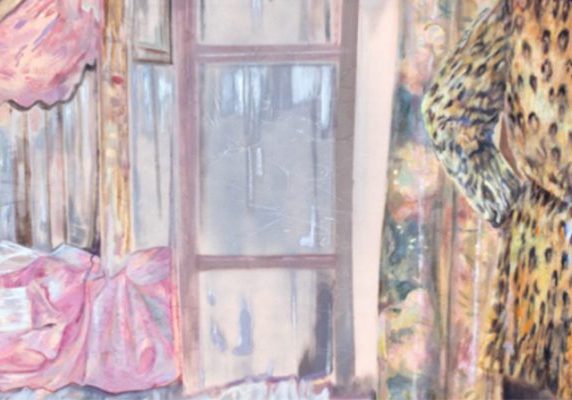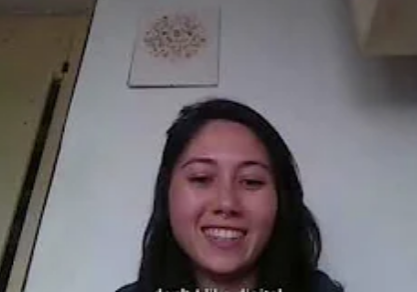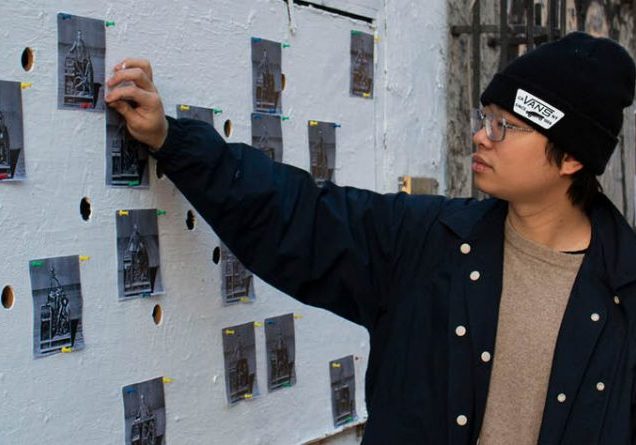Meet the Artist // Tiana Jefferies
Tiana Jefferies is an Australian artist whose work primarily revolves around sculpture and installation art. With a keen focus on exploring ecological intimacies in public spaces, Jefferies reimagines the ordinary through her playful artistic lens. Drawing inspiration from elements found in playground equipment, camping gear, and outdoor architectures such as bird hides, she rearranges materials and visual cues to craft imaginative structures that celebrate queer and ecological intimacies. Informed by queer theory and irreverent ecocriticism, Jefferies’ teetering sculptures delight in ironic slippages and glimmer with joyful degeneracy.
Hello Tiana, thank you for having me in your studio in GlogauAIR today! I can see lots of recycled materials and installations lying around. It feels a little bit like the joy and playfulness of childhood. Can you tell me, how did you start your artistic journey?
I started as a kid, like a lot of artists I think. I liked to be out in the garden and in the backyard, playing with soil and sand, making structures. Then I had a super supportive art teacher in High School who encouraged me to pursue, and go to an art school.
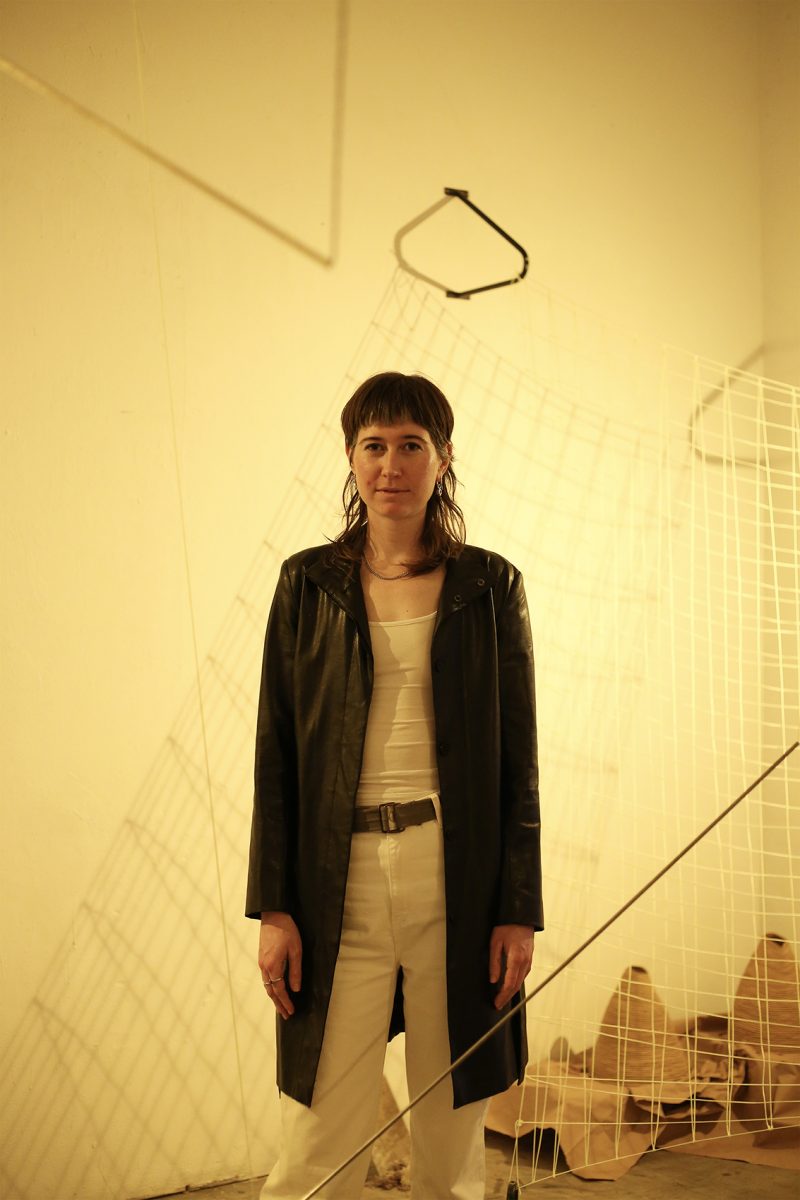
What did you study in art school?
I did a bachelor of fine art and I did an exchange in Edinburgh during that time, which was super formative. It was during this exchange that I realised that casting was a really important part of my practice. There was a big casting studio and technicians that were there the whole day to help us, it was amazing. I learnt traditional casting methods and then when I went back to Australia I started to mess with it. I used concrete, and kind of turned the process on its head a little bit, instead of doing it in the traditional way where you find a “positive image”. I was more interested in the negative space around an object.
How would you describe your practice?
Broadly I guess I would describe it as a spatial practice. I’m interested in anything that takes up space, or exists in space, or creates contours of space. That includes sculpture, installation, and assemblage. I’m also very interested in architecture and landscape architecture as well. Anything that creates contours of space which determine patterns of movement.
You mentioned architecture as one of your inspirations, what are your other inspirations for your work in general?
I’m inspired by the feedback loop between materials or structures, and the people that inhabit them, which includes ecological structures. Ecology broadly just means “home”. Its Greek root is “oikos” which means “home”, or “house”. So, I look at ecological interactions with this in mind. It’s almost like, philosophically, there are these overlaps in the meshy web of ecology, and I’m interested particularly in its inextricable relations in cities or other landscapes.
Do you think the city of Berlin has an impact on your work?
Absolutely, yes. Berlin is inspiring to me. There’s something here, the mood maybe, that is very inspiring to me. For example there’s casualness about some things that might be considered perverse and a comfortableness with things that might be a little bit darker. I really appreciate that, almost like an emotional strategy.
I remember you mentioned that you were interested in safe spaces for queer people. Is that also something that you’re finding in Berlin, or want to research? Or when you’re talking about how people occupy the space, are you also interested in, for example, club culture?
Yeah, absolutely! It’s blowing my mind how many spaces there are dedicated for queer people here, it’s super inspiring. I’m interested in how queer communities make spaces despite infrastructures not being built with these purposes in mind. They transform them and I definitely want to explore this. I’m interested in what makes a space feel safe and for who. I also like the community garden culture here. That’s super interesting to me when culture and land intersect, and the relationships that are built in those intersections.
Apart from being in Berlin, what motivated you to come to GlogauAIR?
It seemed like an amazing program, well structured, but also self directed, formal learning opportunities and informal learning opportunities. It appealed to me to be with other artists. The garden was super interesting to me as well. We have a big backyard culture in Australia, so I wanted to see what that was like here, what kind of interactions might be found there, and how it might be used.
Can you tell me a little more about your project here at GlogauAIR?
It’s never really determined before I make it. I never know what my project is going to look like until the very end. My process involves lots of play and mistakes. I’ve been learning lots of new processes here, weaving, some clay, using motors and magnets for movement too. While I’m learning these new techniques I’m asking myself what are the materials, the structures, the feelings I want to take with me into the future.
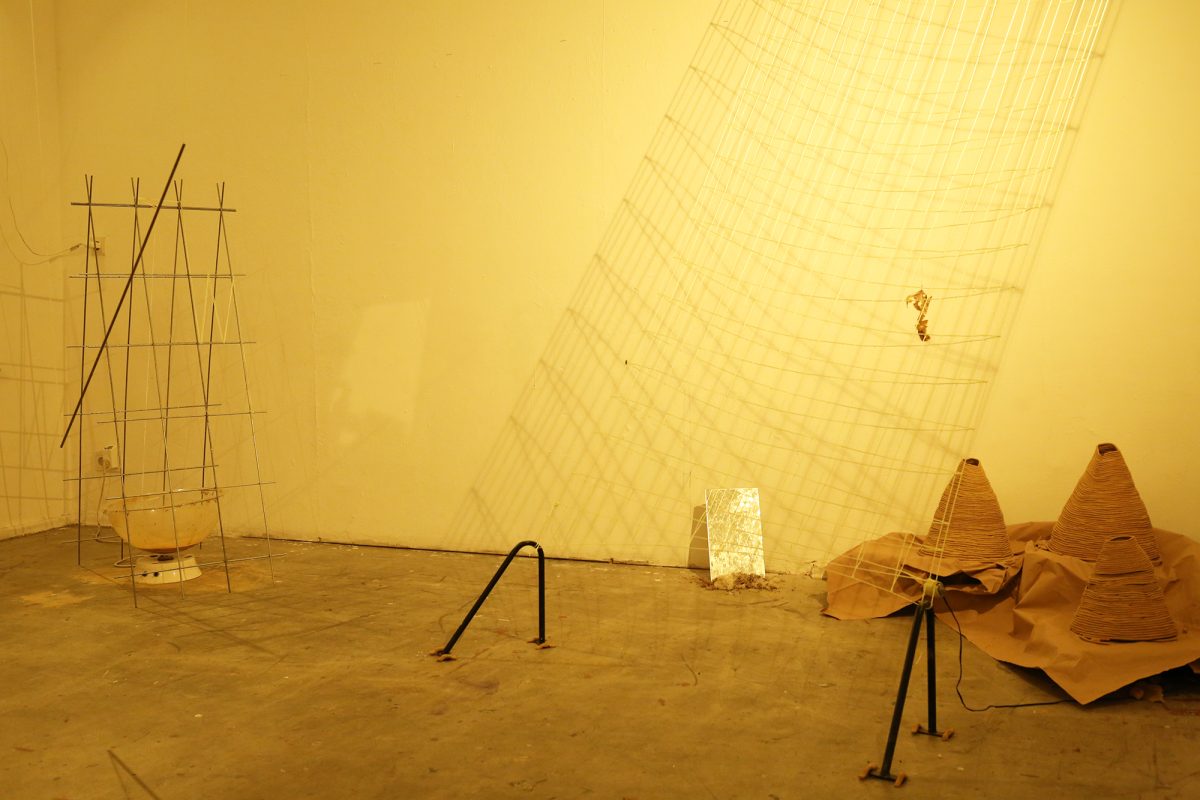
You also work a lot with found objects, Berlin is a good place for that!
Yes, I’m hoping they’ll come into it as well, but I’m not sure how yet. I’ve been going on heaps of walks; and it’s been super inspiring seeing all the objects people leave in the street here. There’s something that I find poetic about a domestic object on the street. Something from someone’s home, something domestic, has suddenly become so public. Almost making the city not just a space for everybody but a home of everybody. There’s also so much potential, once someone places it on the street, anything could happen, it has the option to transform in any way.
